Creating Your Own Paint: A Comprehensive Guide
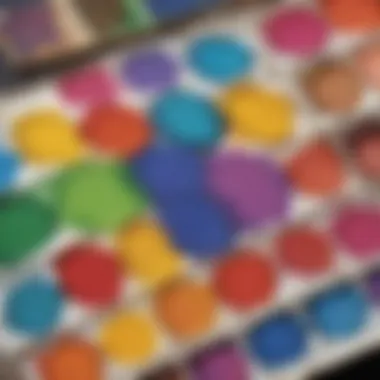
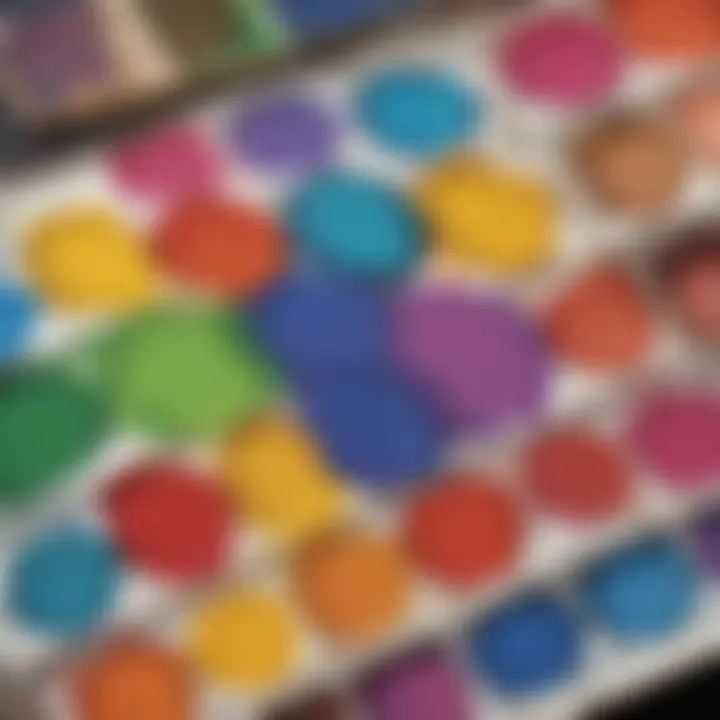
Intro
Creating your own paint can be an exciting and educational activity. It combines creativity and science, allowing one to explore colors while engaging in a hands-on project. Understanding the ingredients and the methods involved is essential. This guide aims to unravel the complexities of paint-making. It will not only emphasize the how-to aspects but also delve into the significance of these processes.
By making paint, individuals can express their unique artistry or enhance learning in educational settings. Unique colors and textures can be created that may not be available in stores. This exploration taps into imagination and resourcefulness. Ultimately, it opens the door to countless artistic possibilities and deepens our appreciation for materials used in the everyday world.
Science Fun Facts
Interesting Trivia and Facts
Did you know that ancient Egyptians used ground minerals to create their pigments? The blue pigment they developed, called Egyptian blue, is one of the oldest synthetic colors known. Even more fascinating is that colors can be defined chemically. This chemical nature not only allows unique shades but emphasizes the complexity behind what we perceive as color.
Quirky Science Stories
Consider the story of how the famous artist Pablo Picasso created his blue period. It was believed that he was inspired by the colors he saw in the world around him. This experience reflects how artists can manipulate paint to express emotions and ideas. In our homes, such a process allows us to paint with intention, twinning creativity with personal stories.
Amazing Science Records
The most expensive paint in the world is called YInMn Blue, created by accident at Oregon State University. This pigment is unique because it reflects infrared light and helps in energy efficiency. Understanding this shows how color and science can merge in exciting ways.
Thought-Provoking Questions
- How do different ingredients affect the shade and texture of paint?
- Can making our own paint enhance our creative abilities?
- What role does color play in our daily life and emotions?
Discover the Wonders of Science
Exploring Various Scientific Concepts
When making paint, several concepts come into play. The chemistry of pigments, binders, and solvents shapes the final product. Each ingredient contributes differently. Pigments provide color, while binders help the paint adhere to surfaces. Solvents make the paint easier to work with.
Educational Videos and Animations
There are many resources available online which vividly explain how paint is made. Videos depict the process, making it easier for kids and adults to grasp the importance of each ingredient. These visual tools can enhance understanding and interest.
Interactive Learning Tools
Interactive platforms like educational websites offer quizzes and simulations about making paint. These tools can reinforce knowledge gained from hands-on practice. Learning becomes engaging and effective.
Real-Life Applications of Science
Creating paint has implications beyond art. It teaches valuable lessons in measurement, mixing, and experimentation. These skills transfer to various fields of science and engineering.
Science Experiment Showcase
Fun and Engaging Experiments
Making paint is not just a creative process; it is an exciting experiment too. One fun project is creating chalk paint using only a few ingredients. This method demonstrates how simple materials can yield colorful results.
Step-by-Step Instructions
- Gather materials: cornstarch, water, and food coloring or natural pigments.
- Mix one part cornstarch with one part water in a bowl.
- Stir until a smooth consistency forms.
- Add food coloring or pigment to achieve the desired color.
- Store in a container when not in use!
Materials List
- Cornstarch
- Water
- Food coloring or natural pigments
- Mixing bowl
- Storage containers
Safety Tips and Precautions
Always wear gloves but if using natural materials, ensure they are safe and nontoxic. Work in a well-ventilated area, especially when making paint with solvents.
Remember, the journey of creating paint is as important as the final product. Engaging in this process sparks creativity and learning.
Preface to Homemade Paint
In recent years, the act of creating your own paint has gained noticeable attention. This not only highlights a return to traditional craftsmanship but also underlines the significance of personal creativity in the realm of art. Homemade paint allows individuals to have control over the colors, textures, and materials they use. Understanding the process can lead to innovative and unique artistic expressions.
There are several benefits associated with making paint at home. First, it provides a cost-effective alternative to store-bought paints, which can be particularly appealing for families and educators working on projects. It fosters a hands-on learning experience, making it ideal for children and adolescents. Through the act of mixing and experimenting, young creators develop fine motor skills and critical thinking.
Moreover, homemade paint often incorporates natural and non-toxic elements. This is an important consideration for safety, especially when children participate in art activities. Knowledge about homemade paint also promotes awareness of environmentally friendly practices. Opting for natural ingredients can lessen the impact of harmful chemicals on the environment, contributing to sustainability efforts.
Key elements of homemade paint include pigments, binders, and solvents. Each plays a crucial role in the final product, influencing durability, application, and appearance. By exploring these components, readers will discover how the right blend results in an effective paint medium. The potential for creativity in using unconventional materials is vast, enhancing the artistic experience.
"The process of creating paint at home is not just a craft; it's a journey into understanding color, texture, and expression."
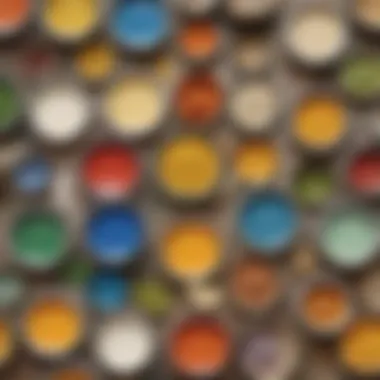
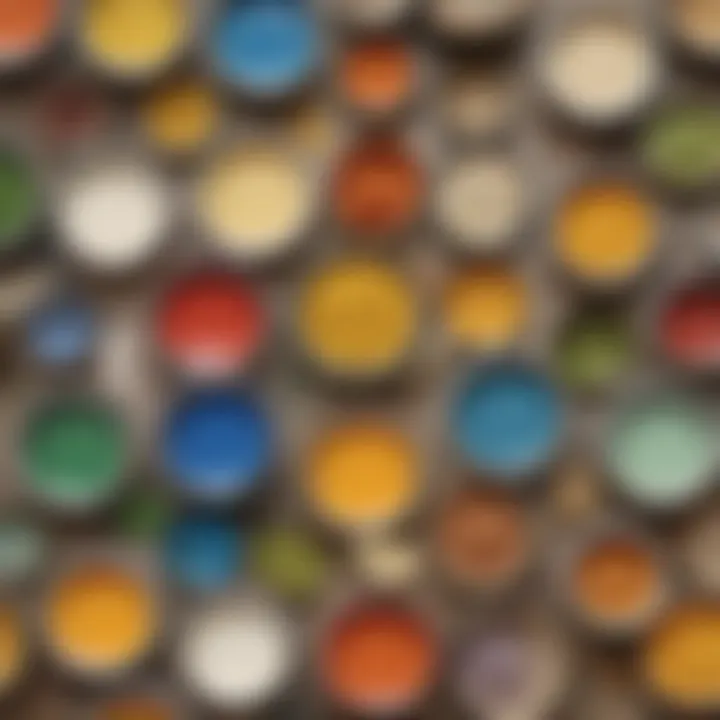
In summary, the importance of homemade paint lies in its ability to empower individuals, especially the youth. They learn while engaging in enjoyable, artistic activities. This introduction sets the stage for what will be covered, revealing how the science of paint creation merges with creative exploration.
Understanding Paint Components
Understanding the components of paint is crucial for anyone who desires to create their own custom paint. Each component plays a specific role in determining the paint's function, quality, and suitability for different projects. By delving into the elements of paint—pigments, binders, and solvents—one can gain insights that enhance both artistic expression and technical proficiency. This section will highlight these fundamental components to provide a solid foundation for your paint-making journey.
Pigments: The Color Makers
Pigments are essential to any type of paint. They provide the color and can greatly influence the final appearance of your artwork. There are natural and synthetic pigments available. Natural pigments often come from minerals, plants, or other organic materials. Things like turmeric gives a bright yellow, while charcoal can create various shades of black. Synthetic pigments provide a vast range of colors and often have better lightfastness, which means they resist fading over time.
When selecting pigments, consider their application and durability. For example, if you want your paint to stand out in outdoor settings, you might choose pigments that hold up against sunlight and weather. On the other hand, for indoor projects, vibrant and richly colored pigments may be the priority. Remember, the choice of pigment plays a key role in your project's overall aesthetic and longevity.
Binders: Holding It Together
Binders are the materials that hold the pigments together and provide adhesion to the surface being painted. Without a binder, the pigments would simply scatter and not adhere to the desired surface. Common binders include glue, cornstarch, and various synthetic resins. Each binder imparts different characteristics to the paint, such as glossiness, flexibility, and durability.
An example of a popular binder is polyvinyl acetate, often found in school glue. It offers a non-toxic option for homemade paint, making it safer for children. In comparison, acrylic polymer emulsions can create a more durable and water-resistant paint. Therefore, choosing the right binder is essential for ensuring that your paint can withstand the rigors of its intended use.
Solvents: The Flow Agents
Solvents are the ingredients that adjust the viscosity of the paint, making it easier to apply. They can affect how smoothly the paint flows from the brush or applicator. Water is the most common solvent in homemade paint for educational purposes, especially for watercolors and tempera. However, oils and other solvents may be used based on the type of paint being created.
The choice of solvent can influence drying time and overall finish. For instance, oil-based paints tend to dry slower, allowing for more blending and manipulation. In contrast, water-based paints dry quickly, which could be suitable for projects requiring prompt completion. It is vital to choose a solvent that aligns with your paint's intended use and your desired working time.
"Understanding the components of paint is like knowing the recipe for a delightful dish; it significantly influences the outcome of your creative ventures."
Basic Materials for Homemade Paint
The process of creating your own paint begins with an understanding of the basic materials involved. The choice of materials can greatly influence the quality, texture, and even the safety of the paint you make. Therefore, knowing what goes into your homemade paint is essential.
Homemade paint can be made from various products found in your kitchen or local art supply store. These materials not only dictate the paint's characteristics but also allow for creativity and personalization. Natural pigments, common binders, and suitable solvents can all contribute to the desired outcome.
Natural Pigments
Natural pigments are the heart of any paint formulation. They provide color and can be sourced from various elements, such as vegetables, fruits, and minerals. For example, beet juice can produce a vibrant red shade while turmeric imparts a rich yellow tone. Natural sources of pigments tend to be non-toxic, making them safer options for children.
The use of natural pigments is often more environmentally friendly compared to synthetic alternatives. This not only appeals to eco-conscious creators, but also allows for experimentation. Different combinations can yield unexpected and unique colors. While these pigments are generally easier to find, they may require some extra preparation before they can be used in paint.
Common Binders
Binders play a crucial role in paint formulation by holding the pigment particles together and ensuring adherence to surfaces. Common household ingredients like flour, cornstarch, and sugar can act as effective binders. For example, using flour in a basic tempera paint recipe can give it a smooth consistency.
The binder's consistency and type can affect how the paint performs when applied. A good binder ensures that the paint adheres well to the paper or canvas. It can also influence the paint's drying time and finish. When choosing a binder, consider the end use of the paint. For instance, some projects may benefit from a glossy finish while others may thrive with a matte look.
Choosing Solvents Wisely
Solvents are pivotal in determining the flow and application of the paint. Water is the most common solvent used in homemade paints, especially for watercolors and tempera recipes. It offers a non-toxic, easy-to-manage option suitable for children's projects. However, other solvents can be added for specific properties, like giving acrylic paint more durability.
When selecting a solvent, consider how it interacts with other materials. Some solvents can alter the drying time or consistency of the paint. For example, using too much water can thin your paint excessively and make it less vibrant. On the other hand, an inadequate amount of solvent can lead to a thick, clumpy mixture that is difficult to work with.
In summary, understanding these basic materials is crucial to creating effective and unique homemade paint. Each component contributes significantly to the final product's look and feel. Experimenting with different natural pigments, selecting appropriate binders, and carefully choosing solvents can lead to rewarding outcomes in your paint-making journey.
Methodology for Creating Basic Paint
In this section, we will delve into the different methods to create basic types of paint. Understanding the methodology is essential because it not only offers practical insights but also cultivates creativity. Each method varies in complexity and purpose, serving a wide range of artistic needs. By equipping oneself with these techniques, you will empower yourself to express ideas visually.
Simple Watercolor Paint
Creating simple watercolor paint is an easy and enjoyable process. Watercolors are often the first choice for young artists due to their vibrant colors and ease of use. To make basic watercolor paint, you will need:
- 1 part baking soda - acts as the binder.
- 1 part white vinegar - helps to flourish the colors.
- 1 part corn syrup - adds smoothness and consistency.
- Food coloring or natural pigments to provide color.
Steps to prepare:
- In a small bowl, mix the baking soda and white vinegar. Watch out, as it will fizz!
- Once the fizzing settles, add the corn syrup and stir it well.
- Finally, add your chosen color and mix until you achieve the desired shade.
- Pour the mixture into small containers and allow it to dry for a day or two.
This simple method provides a fun and engaging way to create paint that children can use in a variety of art projects.
Acrylic Paint Recipe
Acrylic paint is popular for its versatility and fast drying time. It can be used on various surfaces and is simple to make. Here is a straightforward recipe you can try:
- 1 part cornstarch - for body and thickness.
- 1 part water - to dissolve and mix.
- 1 part vinegar - preserves the paint.
- Color pigments to achieve desired shades.
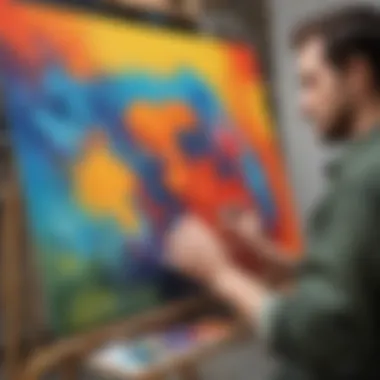
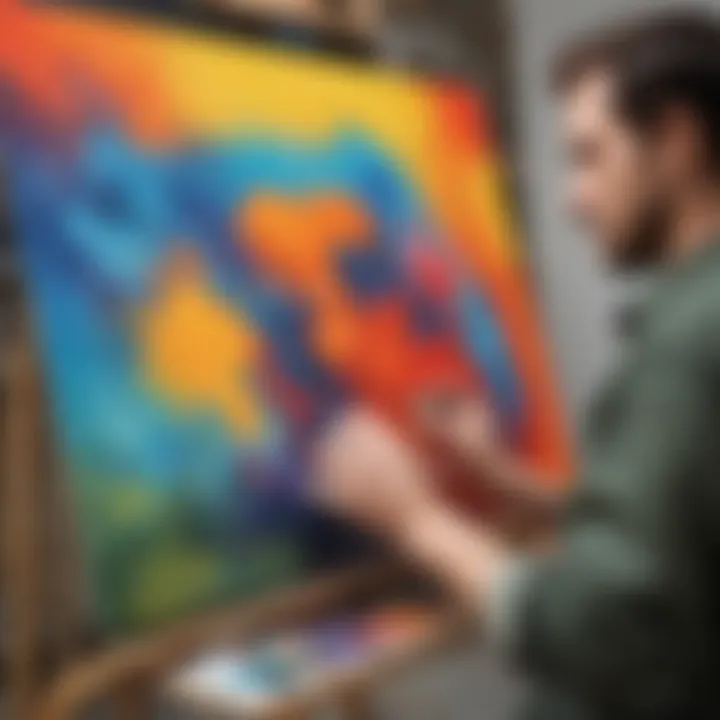
How to make it:
- Mix the cornstarch with water in a saucepan over medium heat. Stir until it thickens.
- Remove it from heat and let it cool slightly.
- Add vinegar and stir until completely combined.
- Mix in your choice of pigments to create various colors.
When stored in airtight containers, this paint can last for weeks.
Tempera Paint Preparation
Tempera paint is known for its bright colors and is a great choice for kids' art projects. The creation of tempera paint can be achieved with simple ingredients:
- 1 cup water - as a base.
- 2 tablespoons corn syrup - for a smooth texture.
- 1 teaspoon cornstarch - acts as a thickener.
- Natural pigments or food coloring for hues.
Preparation steps:
- Combine the water with corn syrup in a bowl. Mix thoroughly.
- Gradually add cornstarch, stirring continuously to avoid clumps.
- Introduce pigments to achieve the desired color intensity.
- Pour into containers, and let it set.
Tempera paint is washable and suitable for children, allowing them to paint freely without worry.
Using the correct methodology will enhance the artistic experience. Each paint type varies in texture and application, giving artists different options based on their needs. Understanding these methodologies enriches the creative process.
Advanced Techniques for Custom Paint
Advanced techniques for creating custom paint offer a pathway for artists to deepen their creative expression. Through increased understanding of paint properties and experimentation, one can achieve effects that are difficult to replicate with standard commercial products. These techniques open opportunities for unique textures and shades that reflect individual style or project needs.
Exploring advanced methods allows the artist to manipulate the paint’s physical characteristics. By creating textured paints or adding metallic elements, the final output becomes not just a visual piece, but an interactive experience. Additionally, knowledge of these techniques brings awareness to ingredient interactions and the potential environmental impacts of selections made during the creation process.
Emphasizing these advanced strategies is crucial for those engaged in art, education, or DIY projects. The outcomes not only broaden artistic perspectives but also help in developing critical thinking regarding material use and artistry techniques.
Creating Textured Paints
Creating textured paints introduces a new dimension to your artworks. Textures can provoke physical interaction, allowing observers to engage more deeply with the piece. Different materials can be added to paint to achieve varying textures. Common additives include sand, fabric fibers, or even beads.
- Sand: Incorporating sand can create earthy textures reminiscent of landscapes.
- Fabric Fibers: Adding shredded fabric can provide a more integrated feel.
- Beads: Small beads add dimension and light reflection, giving depth to paintings.
To mix textured paint, begin by choosing a suitable binder such as acrylic gel medium. Combine the binder with your chosen pigments, then gradually mix in your additive of choice. Adjust the ratio until you achieve the desired texture. Remember, the finish can vary based on how fine or coarse the additive is.
Experimenting with Metallic Paints
Metallic paints offer a striking visual effect that captures light beautifully. They can elevate a simple art project into something extraordinary. When creating metallic paints at home, various materials can be utilized to achieve that lustrous finish.
- Metallic Pigments: These powders are specifically designed for paint. Common types include interference pigments which shift colors based on the viewing angle.
- Aluminum or Bronze Powder: These materials can be mixed with a suitable binder to create a shine.
To produce your metallic paint, combine a binder with pigment, stirring until consistent. The application is key; using a sponge can create texture, while brushes yield smooth results. Pay attention to layering; multiple thin layers often provide a more polished look than a thick single layer.
Overall, experimenting with these techniques fuels creativity. Artists should not shy away from less conventional processes. The beauty of homemade paint lies in the exploration of materials and methods that uniquely express one’s artistic voice.
Environmental Considerations
Creating your own paint comes with several environmental considerations that are essential for both makers and users. The push towards sustainable art practices highlights the need for eco-friendly materials and safe ingredient choices. This section emphasizes the impact of homemade paint on our planet and encourages responsible sourcing and usage.
Sourcing Eco-Friendly Materials
When sourcing materials for homemade paints, one should prioritize options that are not harmful to the environment. Here are some tips for finding eco-friendly materials:
- Natural Pigments: Instead of synthetic options, look for pigments derived from natural sources. Ingredients such as beet juice, turmeric, and clay can provide vibrant colors without the toxic effects associated with chemical pigments.
- Sustainable Binders: Binders like cornstarch or flour are made from renewable sources. Using these can reduce reliance on petroleum-based options.
- Cold-Pressed Oils: For oil-based paints, choose cold-pressed oils, which are less processed and free from solvents that can release harmful vapors.
Acquiring these materials not only supports the environment but also enhances the quality of the art projects. Crafting with natural ingredients can engage the creative spirit while maintaining respect for our ecosystem.
Understanding Chemical Safety
Safeguarding personal health and the environment is crucial when making paint. Homemade paints can use many ingredients, some of which may pose safety risks if not handled correctly. Here are some key points to consider:
- Read Labels Carefully: Always check labels on any commercial products purchased. Some items may contain harmful substances not suitable for children.
- Ventilation: Ensure that your workspace is well-ventilated. This is particularly important when using any solvents, which can release fumes.
- Protective Gear: Utilize gloves and masks when working with powders or materials that can create dust. This helps to prevent skin irritation and inhalation.
- Proper Disposal: Be mindful of how to dispose of any leftover materials. Avoid pouring them down the drain. Follow local regulations for disposing of art materials to reduce environmental harm.
"Safety is as important in art as skill. Being safe means enjoying the creativite process more fully."
Educating oneself about the risks and safety measures is vital. This knowledge will not only ensure safer paint-making practices but also promote a sustainable artistic journey for all.
Applications of Homemade Paint
Creating homemade paint is not just an artistic endeavor; it serves numerous practical purposes that extend into education, therapy, and sustainable living. Understanding the applications of homemade paint allows individuals to leverage creativity in various settings, whether at home or in the classroom. This section focuses on the significance of using homemade paint across different scenarios and provides insights into maximizing its benefits.
Homemade paint can be a powerful tool for creativity and expression, enabling artists of all ages to explore their artistic inclinations without the constraints of commercial products. The ability to concoct colors offers a unique opportunity for innovation and personal preference, turning the act of painting into a truly personalized experience. Additionally, making paint at home fosters a sense of accomplishment and encourages resourcefulness, particularly in younger audiences.


When using homemade paint, considerations about safety and sustainability become paramount. Many commercial paints contain harmful chemicals that can pose risks to health. By choosing natural and eco-friendly materials, individuals can create paint that is safer for children and better for the environment. Embracing homemade paint aligns with a growing awareness of sustainability in art practices.
Art Projects at Home
Art projects at home can benefit immensely from the use of homemade paint. The process of creating paint evokes excitement and anticipation, serving as an excellent introduction to the fundamentals of art. Encouraging children to participate in making their own paint empowers them to understand color mixing, texture, and the nature of materials they use. It also allows them to appreciate the effort involved in creating art from scratch.
Some ideas for at-home art projects include:
- DIY Wall Art: Create large canvases using homemade acrylic or tempera paint. Children can experiment with colors and techniques to create stunning visual displays for their rooms.
- Custom Greeting Cards: Use homemade watercolor paint to design unique cards for friends and family members. The personal touch adds value to any occasion.
- Themed Art Sessions: Plan sessions around specific themes like nature, seasons, or animals. This not only inspires creativity but also enhances learning opportunities.
Additionally, the process encourages teamwork and collaboration among family members. Parents can guide their children through the process, making it a shared experience that builds stronger bonds.
Educational Uses in the Classroom
In the classroom, homemade paint introduces an innovative approach to art education. It promotes a hands-on learning experience that can stimulate discussion about art history, the science of color, and environmental awareness. Educators can incorporate paint-making activities into lesson plans, allowing students to witness the chemical reactions and artistic decisions that take place during the process.
Homemade paint also opens doors to interdisciplinary projects. For instance, teachers can integrate art with science by exploring how pigments interact with different binders and solvents. Some possible classroom activities could include:
- Color Theory Workshops: Teach students about primary, secondary, and complementary colors by allowing them to mix their own paint. It gives them a practical understanding of color relationships.
- Art and History Projects: Encourage students to recreate famous artwork using homemade paint. This can be tied to lessons on specific art movements or historical contexts.
- Collaborative Murals: Create large-scale murals using homemade paint, involving all students in the design and execution to foster teamwork and creativity.
In sum, the use of homemade paint in education fosters enhanced learning experiences, encourages creativity, and promotes sustainability. As students gain practical skills from these projects, they also learn the importance of resourcefulness and creativity in various aspects of life.
Troubleshooting Common Issues
Creating your own paint is a rewarding endeavor. However, it can come with its challenges. Understanding how to troubleshoot common issues helps in perfecting your paint-making skills. This section focuses on common problems that may arise during the paint creation process, primarily focusing on drying issues and color fading. Knowing how to effectively resolve these challenges can lead to better results, enhance the quality of your artwork, and ultimately improve your user experience.
Dealing with Drying Problems
Drying problems can frequently occur with homemade paint. These issues can happen for various reasons, such as the type of binder used or environmental factors like humidity and temperature.
Some common drying issues include:
- Paint taking too long to dry: This might be a result of an excessive amount of solvent in the mix.
- Paint drying too quickly: This generally can happen in low humidity environments. When the paint dries rapidly, it may not adhere well to the surface.
To address these issues, consider the following tips:
- Adjust your formula: If drying time is consistently a problem, experiment with different binders like xanthan gum or cornstarch. Adjusting the ratios can ensure a better balance for drying.
- Create ideal conditions: Use a dehumidifier or air conditioner to create a stable environment when painting. This helps manage drying times effectively.
- Timing your application: Work in smaller sections to manage how quickly your paint dries. This lets you blend or layer colors more effectively.
By understanding these drying problems and how to fix them, you can enhance your final art outcomes.
Addressing Color Fading
Another common issue with homemade paint is color fading. Over time, exposure to light, humidity, and even air can lead to a loss of vibrancy in your artwork.
To minimize fading, consider the following points:
- Choose high-quality pigments: Some pigments are more resistant to fading than others. For example, synthetic pigments generally hold their color better than natural ones. Research the properties of the pigments you use to avoid potential fading.
- Protect your artwork: If you plan to display your art, consider using a UV-resistant varnish. This not only preserves the color but also provides a protective layer against environmental factors.
- Store paintings properly: When not on display, keep your artwork in a cool, dark place. Avoid direct sunlight and moisture, which can contribute to fading.
Taking these precautions can extend the life of your art and ensure that the colors remain vibrant for years.
Innovative Ideas for Using Homemade Paint
Using homemade paint opens up a world of opportunities for creativity and experimentation. It is not just about creating colors for drawings and crafts. The innovative use of such paints can enhance various disciplines. Merging art with science, education, and home decor provides enriching experiences for individuals, especially children and families.
Unique Canvas Materials
Utilizing unique canvas materials can expand artistic expression when employing homemade paint. Traditional canvases are often made from stretched fabric or paper, but alternatives exist. Some interesting materials include:
- Wood Panels: They offer a sturdy surface that holds paint well. Homemade paint can adhere nicely, especially when prepared with appropriate binders.
- Recycled Materials: Cardboard, old furniture, or even fabric scraps provide a sustainable alternative. Painting on these recycled surfaces can also serve as an excellent lesson in sustainability.
- Natural Elements: Rocks, leaves, and sticks can become unique canvases. Painting on these items encourages children to interact with nature, fostering both creativity and environmental awareness.
Using varied materials can lead to unexpected textures and results, making the painting experience richer.
Combining Different Painting Techniques
Combining different painting techniques can enhance the overall effects of homemade paint. Here are some approaches that work well together:
- Layering Techniques: Start with a base of watercolor, and once dried, apply acrylic paint. This layering creates depth and can result in striking visual effects.
- Mixing Media: Blending tempera paints with pastels or markers allows for greater experimentations. For instance, using tempera as a base can give way to soft pastels for fine details.
- Textures with Tools: Utilizing sponges, brushes, or even fingers can produce different results. Techniques such as stamping or dabbing add unique textures to the artwork.
By experimenting with these techniques, you encourage not only creativity but also understanding the properties of different types of paint and how they interact with each other.
Creative exploration adds value to the learning process and makes the experience enjoyable for children and adults alike.
Finale
The conclusion acts as a vital element in this guide, encapsulating the essential insights shared throughout the document. Making your own paint offers more than just a creative outlet; it can also enhance understanding of materials and their properties. By exploring the components of paint—pigments, binders, and solvents—one grasps not only the science involved but also how each element contributes to the final product.
Benefits: Creating homemade paint can lead to various benefits:
- Cost-effectiveness: Homemade paint is often cheaper than store-bought options.
- Personalization: It allows for customization of colors and finishes.
- Sustainability: Using eco-friendly materials minimizes environmental impact.
Understanding the processes and methodologies discussed enables readers to experiment with their art. Whether for school projects or personal endeavors, this knowledge enhances creativity and fosters a deeper appreciation for art.
Furthermore, addressing potential issues, such as drying problems and color fading, ensures the quality of the paint produced. This guide is not only a how-to resource; it's an invitation to engage in a practical and educational journey.
In summary, the insights and techniques presented here pave the way for imaginative and impactful art creation, making homemade paint a worthy endeavor for anyone interested in the arts.







